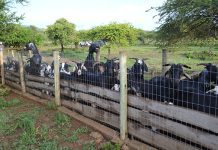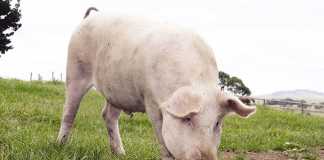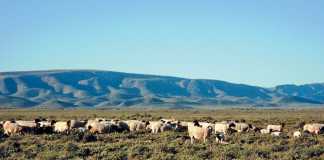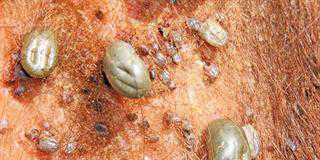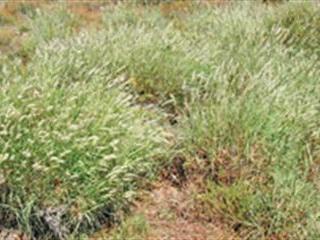
Crop farmers who switch to livestock often fail to realise how long the veld takes to recover from poor management decisions.
“Planting the wrong cash crop or applying fertiliser incorrectly can be rectified the following season. But animal production on natural veld depends on the long-term, sustainable use of the grazing ecosystem,” explains Prof Hennie Snyman of the University of the Free State’s Department of Animal, Wildlife and Grassland Sciences.
‘Grazing’ should not be confused with ‘overgrazing’ which, in most cases, results from animals spending too long grazing in one area. Grazing is a natural phenomenon and every fodder plant can be defoliated (de-leafed) without sustaining permanent damage. In fact, grasses are well adapted to being cut down.
Assessing the veld
The first step towards sustainable grazing is to carefully assess each camp on your farm, comparing it with an ideal camp or farm in your district. Does the camp consist mostly of desirable species and is the soil well covered? Or are there many bare patches and signs of soil erosion and low-value plants, or even unpalatable invaders? Sometimes a farm’s plant cover can be misleading. The soil might be well-covered – but with low-productive, pioneer grasses or shrubs with little nutritional value.
Understanding the animal
Next, get to know the grazing habits of the various livestock species on different types of veld such as grassveld, mixed veld, shrub veld or tree veld (savannah). Sheep are low-strata grazers. They prefer to eat grass or shrubs at an average height of 100mm. As they are selective grazers, they approach grass tufts from the side.
Goats are multi-strata grazers that eat at an average height of 200mm, although shrubs up to 1,5m high will be browsed.
Cattle are deep-strata grazers with an average grazing height of 300mm. Unlike selective grazers, they are most likely to approach grasses from directly above.
Rest is important
When climax grasses become dormant at the seeding stage, they produce more food than they need for growth. These reserves are moved from the leaves to storage organs such as the roots for later use, a process that occurs before the first frost, which is why grasses have such low feeding value in winter. “It’s therefore important to rest some camps during the growing season long enough for the leaves – the factories of the plant – to function optimally,” says Prof Snyman.
“If not, you’ll eventually have too many camps dominated by poorly developed, low-producing plants. “During winter, the reserves are used mainly for root growth. Then, in early spring, before the plant has enough leaves to photosynthesise well, the reserves are used to start regrowth as well as for seed formation later on.”
Research has shown that reserve levels drop dramatically immediately after grazing. The more severely the plant is grazed, the more leaves it will lose and the longer it will have to depend on the withdrawal of growth reserves. Veld should thus be given enough chance to recover fully from grazing. “This means longer rest periods than have been accepted in the past,” says Prof Snyman.
“The latest advice is for farmers to use a grazing management system that provides a full growing season’s rest. This allows plants to regain their vigour and produce more seed as well as allowing root growth to take place.”
The 3 stages of plant succession
Plant succession is a natural process in which bare soil, such as an old crop land, is colonised by pioneer species which have a short life (annuals), but produce large quantities of seed that establishes quickly after rain and improves growing conditions for the next stage – a community of more stable, longer-living sub-climax plant species. The final stage is reached when the climax types – the long-living plants that are usually palatable and nutritious – have, after several seasons of good management, largely replaced the weed-like pioneers.
Incorrect land use, such as overgrazing, can reverse this naturally occurring process and turn good climax veld into low-production pioneer veld. Note, however, that the climax stage (such as in the case of forests) is not necessarily the best type of vegetation for livestock farming. Each ecological region or veld type has its own set of species for each stage.
In the central Free State, for example, carrot seed grass (Tragus berteronianus) is usually regarded as a pioneer species, Lehmann’s love grass (Eragrostis lehmanniana) is classed as sub-climax type, while buffalo grass (Stenotaphrum secundatum) forms sought after climax grazing.
Tips for optimal grazing
- Use a grazing system that carries surplus material over to the dry months when shortages can be expected.
- Rest some camps in spring so the grass does not need to draw on its reserves.
- Use rest periods for the seasonal accumulation of growth reserves.
- Rest some camps in autumn so that the grasses can translocate their reserves to storage organs.
- Rest the grass when the veld is in poor condition to ensure seed production.
- Giving a full growing season’s rest for a camp every third year will result in more vigorous plants and therefore higher plant production.
Contact Prof Hennie Snyman on 051 401 2221.






